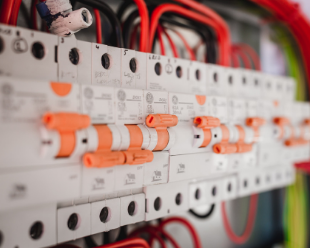
When a fuse blows, it can come as a surprise. Most people nowadays have had the old-fashioned fuse panels (also known as fuse boxes) in their homes replaced by modern electrical panels with circuit breakers.
Yet people commonly use the expression “blown fuse” to describe just about any unexpected electricity-related occurrence, especially one involving a loss of power.
A “blown fuse” can mean many things–several of which have little to do with actual fuses. This makes it hard to answer the question, “Why do fuses blow?”
Blown Fuse or Power Outage?
In the event your power goes out, the first thing to do is remain calm. Check to see if your neighbours still have power. If they still have power, you can rule out a power outage. You can also check the Vector site to rule out a local power outage. Typically, when a fuse blows, it only happens to one section of your home, check what section that is and turn everything off, including light switches and appliances.
The most common cause of a blown fuse is an overloaded circuit. An overloaded circuit is when you have too many devices, appliances or lights operating at the same time. Faulty appliances can also cause a fuse to blow or a circuit to trip. They design a circuit breaker to trip in the event of an overload to prevent circuit wires from heating to dangerous levels. Other reasons that can cause a blown fuse are ground fault, power surge, short circuit or arc fault.
Identify Blown Fuse or Tripped Circuit
With all your appliances off, go to your switchboard, found normally in a utility area, such as a basement, laundry room, garage, or utility closet. Don’t know where to find your switchboard – give us a call and we can help.
If you do not have a switchboard, your home’s electrical service is probably older, and fuses may control and protect the circuits. Fuse boxes operate similarly to breakers but require a different process to restore the circuit if a fuse “blows.”
If you have a newer switchboard with circuit breakers open the door and look for a bank of switches arranged in rows. There may be different circuit breakers in the box, but all operate the same way, and all are reset in exactly the same fashion.
Open your switchboard door and look for the breaker on which the switch lever has shifted away from the ON position. It likely will be the only one with a lever that is not pointing in the same direction as the other breakers. Most circuit breakers come with an orange or red marker window showing that it has tripped. If there is no indicator, look for the switch that has shifted fully to the OFF position.
Push the switch into the ON position to reconnect your circuit and restore power to it. With some circuit breaker styles, this reset action may mean first pushing the breaker lever fully to the OFF position then back to the ON position. You will feel resistance in the lever, followed by a distinct clicking sound or sensation as the breaker clicks to the ON position.
Test your Appliances
In the event of a tripped circuit, you can then test all your appliances and lights. Do this one by one, if your circuit trips again, then you know the last appliance or light you turned on, is the cause. This is when it is time to call an Electrician.
Check Your Switchboard
If you have an older switchboard with fuses or you are experiencing regular circuit outages - “blown fuses”, detect burning smells, or notice signs of deterioration, such as scorching, rusting or corroding around your circuit breaker–call AB Electrical immediately. Ignoring electrical failure can cause fires and other home-threatening problems.


